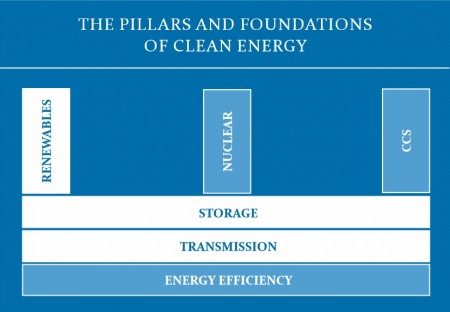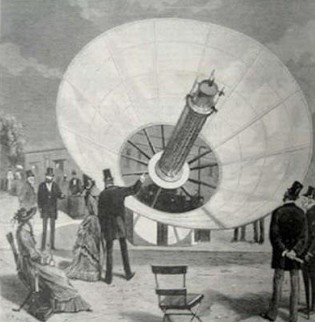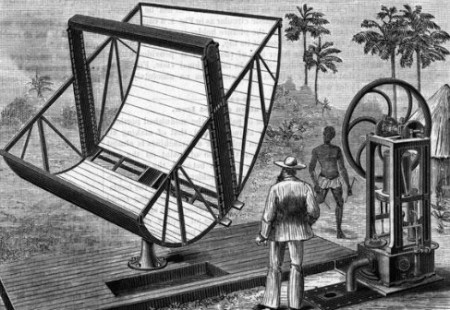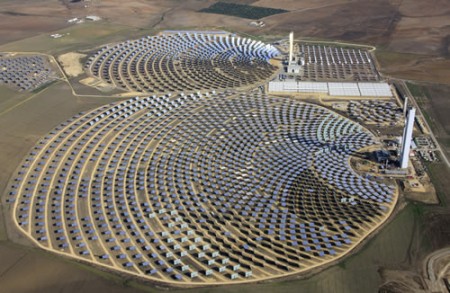December 29, 2015 – The headline of this posting is a quote ascribed to Thomas Alva Edison in a conversation he had with Henry Ford and Harvey Firestone in March of 1931. Edison is purported to have followed this line with “What a source of power. I hope we don’t have to wait until oil and coal run out before we tackle that.”
It wasn’t the first time that Edison questioned our dependence on burning fuel to generate electricity. As early as 1912 he built an off-grid, energy-self-sufficient home in New Jersey to demonstrate new technology. The house was equipped with all the latest Edison electric-powered inventions including a a rack of 27 batteries to provide the juice. To keep the batteries topped up a gas-run generator was added but Edison’s plans included replacing gas-power with a wind turbine.
Edison wasn’t the first technology guru to envision a world run on solar energy. Back in 1860, Auguste Mouchout, a mathematics teacher, expressed concern about his native country of France being too dependent on coal. He is quoted as saying, “Eventually industry will no longer find in Europe the resources to satisfy its prodigious expansion. Coal will undoubtedly be used up. What will industry do then?” He constructed a solar boiler along with a tracking mechanism to provide maximum solar concentration for his invention. In 1872 he constructed a solar-powered engine capable of generating 1/2 horsepower. Dispatched to Algeria by the government he was commissioned to build a solar-powered steam engine and later at the Paris Exposition of 1878 (see image below) demonstrated its use by attaching a condenser to make ice cubes.
John Ericsson, best known for building the Civil War Union battleship, the Monitor, also dabbled with solar energy. He commented about the future exhaustion of coal resources and advocated for the use of the heat of the Sun to be employed as a prime energy source. He is credited with inventing the parabolic trough (seen below) for concentrating solar energy, a variation on the parabolic dish-shaped mirror deployed by previous solar innovators.
Edison dabbled with solar well past 1912 building a 10-Megawatt solar tower deployed in California and later a 30-Megawatt system in Jordan. Technically successful, both proved to be noncompetitive when compared with conventional fossil-fuel plants of the day.
Today, Edison’s experiment in solar towers has been brought to market with large-scale thermal solar power plants that use thousands of parabolic shaped mirrors to focus sunlight on a central tower where the heat generated gets used to drive steam turbines.
Edison’s initial conversation with Ford and Firestone appears as the opening statement in a recent publication entitled, “A Global Apollo Programme to Combat Climate Change.” It is interesting that the authors, British scientists and economists, use the Apollo Project as their reference point. In the past I have described the need for the world to make a Manhattan Project investment in renewable energy technologies to reverse the impact of carbon dioxide in the atmosphere from the burning of fossil fuels. So whether Apollo or Manhattan, the call for an international scientific and technological effort funded by governments and industry sounds like a right approach to tackle climate change.
The focus would be on discovering new, “cheaper ways to produce, store and distribute clean energy.” There is “no single magic bullet.” The British authors in their proposal believe investment needs to be made in six major areas:
- renewables (solar and wind)
- nuclear power
- coal and gas combined with carbon capture and storage (CCS)
- cheap energy storage
- cheap energy transmission
- energy efficiency and conservation
The program calls for a commitment to a ten-year investment in research and development beginning in 2016 to discover “the disruptive new technologies which can help produce clean energy on a massive scale.” They call for:
- A base-load energy target from renewable sources that is cheaper than equivalent coal-fired power plants by 2020 in high solar capacity regions of the planet, and globally by 2025.
- A commitment from governments joining the program to spend 0.02% of gross domestic product over the period from 2016 to 2025.
- A clear road map similar to the one that has driven the cost of semiconductors down over the decades following the famous Moore’s Law. The road map would be constructed by a committee of 20 representatives from participating countries and industry partners.
Where Edison saw the future necessity to develop renewables driven by declining global fossil fuel resources, the world today has a far different and more purposeful reason for putting our money “on the sun and solar energy,” and all the other forms of zero-carbon emitting energy technologies.
In the words of the authors of this proposal, “By harnessing the power of the sun and wind in time, we have a good chance of preserving life on earth as we know it……let us show we have the collective intelligence to understand and overcome the danger that faces us.”












